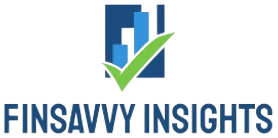Loans are often seen as a necessary evil, a financial stepping stone to achieving our goals. Yet, many of us navigate through loan agreements without fully grasping their intricacies. This article delves into the world of bank loans, unraveling the various types available, from personal loans to mortgages. We’ll explore the implications of taking on debt, examining aspects like interest rates, repayment terms, and potential risks. By deciphering the jargon and understanding the underlying mechanisms, you’ll be empowered to make informed borrowing decisions and navigate the loan landscape with confidence.
Bank Loans
Bank loans are financial instruments that facilitate the borrowing and lending of money between financial institutions, such as banks, and individuals, businesses, or governments. This financial arrangement enables borrowers to access funds for various purposes, ranging from personal needs to significant business investments.
These loans are characterized by two fundamental elements: a predetermined interest rate and a specified repayment period. The interest rate represents the cost of borrowing, while the repayment period outlines the duration within which the borrower must return the borrowed funds.
Bank loans serve as a critical component of the economic ecosystem, fueling economic activities and supporting growth across various sectors. Whether it’s an individual seeking funds for a home purchase, a business aiming to expand its operations, or a government funding infrastructure projects, bank loans provide the necessary financial resources to turn these aspirations into reality.
As the backbone of the lending and borrowing process, understanding the nuances of bank loans is paramount for individuals and entities navigating the complexities of personal and financial development. In the subsequent sections, we will explore the diverse types of bank loans, their implications, and the broader landscape of responsible borrowing and regulatory oversight.
Types of Bank Loans
Bank loans come in various forms, each tailored to meet specific financial needs. Below is a table outlining the most common types of bank loans:
| Type of Loan | Description | Key Characteristics |
| Personal Loans | Unsecured loans for individual use, covering expenses such as medical bills, debt consolidation, or vacations. Typically carry higher interest rates due to lack of collateral. | No collateral required; higher interest rates; eligibility based on creditworthiness. |
| Home Loans (Mortgages) | Secured loans used to finance real estate purchases. The property serves as collateral, and repayment occurs over an extended period, often spanning decades. | Property serves as collateral; long repayment period; accessible homeownership. |
| Auto Loans | Loans specifically designed for financing vehicle purchases. Similar to home loans, the vehicle acts as collateral, and repayment is done through scheduled installments. | Vehicle serves as collateral; monthly installments; risk of repossession for non-payment. |
| Business Loans | Loans catering to the financial needs of enterprises. Used for business expansion, equipment purchase, or operational expenses. Can be secured or unsecured based on creditworthiness. | Can be secured or unsecured; supports business growth; terms depend on creditworthiness. |
| Student Loans | Loans tailored to fund education expenses, covering tuition, books, and living costs. Repayment typically begins after the completion of studies. | Deferred repayment; focused on supporting education; may offer flexible repayment plans after graduation. |
Explanation:
- Personal Loans: These are unsecured loans, meaning they are not backed by collateral. As a result, interest rates are usually higher, and eligibility is determined primarily by the borrower’s creditworthiness.
- Home Loans (Mortgages): Secured by the property being financed, mortgages allow individuals to purchase homes. Repayment terms are extended, often spanning 15 to 30 years, making homeownership more accessible.
- Auto Loans: Tailored for vehicle purchases, auto loans are secured by the purchased vehicle. Monthly installments are common, and failure to repay may result in the repossession of the vehicle.
- Business Loans: Designed to meet the financial needs of businesses, these loans can be either secured (backed by collateral) or unsecured (based on creditworthiness). They are crucial for funding expansions, purchasing equipment, or managing operational expenses.
- Student Loans: Geared towards funding education, student loans typically offer deferred repayment until after graduation. The focus is on supporting individuals pursuing higher education without immediate financial strain.
Understanding the distinctions among these types of loans is essential for borrowers to choose the one that aligns best with their specific financial goals and circumstances. Each type comes with its own set of terms, conditions, and implications that borrowers should carefully consider before making a decision.
Implications of Bank Loans
Bank loans, as essential financial instruments, wield profound implications for the financial well-being of individuals, businesses, and economies at large. Delving into these implications provides valuable insights for borrowers, enabling them to make informed decisions and navigate the multifaceted terrain of lending.
Interest Rates play a pivotal role in shaping the financial impact of loans. The choice between fixed and variable rates is a critical decision for borrowers. Fixed rates provide stability, ensuring consistent monthly payments throughout the loan term. On the other hand, variable rates, susceptible to market fluctuations, can lead to changes in monthly payments. Borrowers opting for variable rates must be prepared for potential shifts in their interest expenses.
Credit Scores act as a barometer of creditworthiness. Lenders use these scores to assess the risk associated with a borrower. A higher credit score often translates to lower interest rates and more favorable loan terms. Conversely, a lower credit score may result in higher interest rates or, in some cases, loan denial. Understanding the impact of credit scores empowers borrowers to take actions that positively influence their creditworthiness.
Collateral represents a crucial aspect, particularly in secured loans. Secured loans, backed by collateral such as homes or vehicles, provide lenders with a safety net. However, the stakes are high for borrowers since failure to repay could lead to the loss of the pledged asset. Unsecured loans, lacking collateral, often come with higher interest rates, reflecting the increased risk for lenders.
Loan Repayment
Loan repayment is a critical aspect of the borrowing process, encompassing various elements that borrowers should carefully consider and understand.
- Scheduled Repayments: Upon securing a bank loan, borrowers commit to a structured repayment plan. This typically involves monthly installments, with each payment comprising a portion of the principal amount and accrued interest. Scheduled repayments ensure a systematic and predictable approach to settling the debt.
- Interest and Principal Allocation: Within each installment, a portion addresses the interest accrued on the outstanding balance, while the remainder contributes to reducing the principal amount. Over time, as the outstanding balance diminishes, the interest component also decreases, accelerating the repayment of the principal.
- Amortization Schedules: To provide transparency and clarity to borrowers, banks often furnish amortization schedules. These documents outline the breakdown of each payment, detailing the portion allocated to interest and principal. Amortization schedules empower borrowers to track their progress in repaying the loan and understand the evolving composition of each payment.
- Early Repayment Options: Some loans offer the flexibility for early repayment, allowing borrowers to settle the outstanding balance before the scheduled term concludes. While this can result in interest savings, borrowers should carefully review loan agreements to understand any potential penalties or fees associated with early repayment.
- Impact on Credit Scores: Timely and consistent loan repayments play a crucial role in maintaining or improving credit scores. A history of punctual repayments contributes positively to creditworthiness, opening doors to more favorable loan terms in future financial endeavors.
- Default Consequences: Failure to adhere to the agreed-upon repayment schedule can lead to default. Defaulting on a loan has severe consequences, including damage to credit scores, imposition of penalties, and potential legal actions by the lender to recover the outstanding amount. It is crucial for borrowers facing financial challenges to communicate proactively with their lenders and explore available options, such as loan restructuring or temporary relief measures.
Understanding the intricacies of loan repayment is fundamental for borrowers to manage their financial commitments effectively. Whether it’s comprehending the breakdown of monthly installments or being aware of early repayment options, borrowers armed with this knowledge are better positioned to navigate the journey toward financial freedom.

